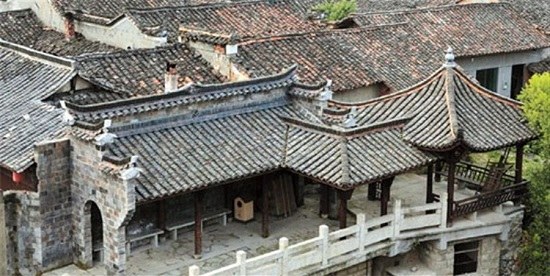Find the beauty of Zhejiang’s ancient towns
 0 Comment(s)
0 Comment(s) Print
Print E-mail Shanghai Daily, April 21, 2016
E-mail Shanghai Daily, April 21, 2016

Xitang and Wuzhen towns are so well known that some complain about the masses of tourists that spoil their charm. But there are towns in Zhejiang Province that are similar to Xitang and Wuzhen, minus the huge crowds. Slightly off the beaten path, they are less commercialized, they are just right for a weekend trip.
Shanghai Daily has taken a look at some of the best options.
Anchang Ancient Town
Anchang is a classic water town. The waterways are flanked by folk houses typical to this region with up-turned eaves, carved beams and painted rafters.
The town's history is said to date back to the Northern Song Dynasty (1127-1279). Throughout the dynasties, it was a busy transportation hub for rice and textiles. According to historical documents, nearly 1,000 stores were located on the main street by the end of the Republic of China (1911-1949).
Nowadays, the still street that is still paved with stones is less crowded with shops, but there is a number of crafts stores selling bamboo strip weaved baskets, traditional shoes, and handmade wooden buckets.
In addition, natives still celebrate events according to original customs. For example, wedding ceremonies must be held on an auspicious day, and the bridegroom will paddle a boat to pick up the bride, while the bride is handed over with a large dowry.
Local authorities have built Anchang Customs Museum and Anchang Culture and History Museum to display the town's history and development.
How to get there: S2 Expressway — G92 Expressway
Nianbadu Town
Nianbadu Town is located at the border of Zhejiang, Jiangxi and Fujian provinces. Huang Chao, a leader of a major agrarian rebellion during the Tang Dynasty (AD 618-907), built a path winding through the mountain ranges, turning the town into a vital military base. In the Qing Dynasty (1644-1911), the military path gradually evolved into a commercial road. Cotton products and local specialties were transported across provinces along it, which in return made the town a bustling hub with endless streams of merchants from other provinces.
Some of the merchants settled down, the reason why some residents can speak nine dialects.
Nianbadu boasts 11 Ming Dynasty (1368-1644) ancestral halls and temples and 36 splendid residential buildings, which mainly belonged to the wealthy Cao, Yang, Jiang and Jin families.
The largest Confucian Temple covers an area of 1,500 square meters. Its interior decoration was characterized by sophisticated wooden sculptures of phoenixes, dragons, flowers and birds.
What makes the town unique is the tradition of ballads that are sung, which started in the Qing Dynasty. The ballad has been well preserved by natives for centuries and is still performed for festivals. In 2008, the central government described the town as "home to Chinese folk ballad."
How to get there: G25 Expressway — G60 Expressway — G3 Expressway
Cicheng Town
Cicheng was originally a prefecture established in the Tang Dynasty. Being the only well-protected ancient city in this area, it is said to be Jiangnan region's top prefecture due to its large number of Tang architecture and streets.
The antiqued feudal government office, also called ya men, was constructed in AD 738 with an area of 40,000 square meters. It is comprised of a courtyard and a hall (typically serving as a court of law), offices, prison cells, storerooms, and residences for the bureaucrat. The present-day buildings were restored in late Qing Dynasty since the original one was destroyed in fire.
In addition, Cicheng also boasts the largest Confucian Temple across eastern Zhejiang. Ever since its establishment in the Song Dynasty (960-1279), the temple has played an important role in popularizing Confucianism among the public.
The town is not only famous for antique buildings, but also noted for the handmade glutinous rice cake, which could date back to the Spring and Autumn Period (770-476 BC). Every year it produces more than 700 tons of glutinous rice cake. Today, locals still keep the tradition of eating glutinous rice cake to celebrate Chinese New Year.
How to get there: S2 Expressway — G92 Expressway — G15 Expressway





